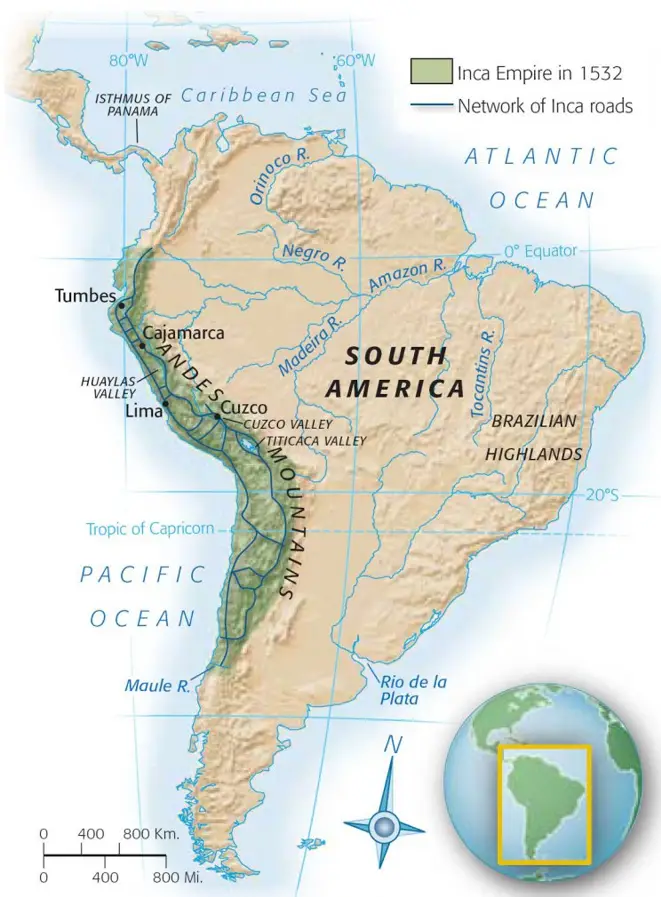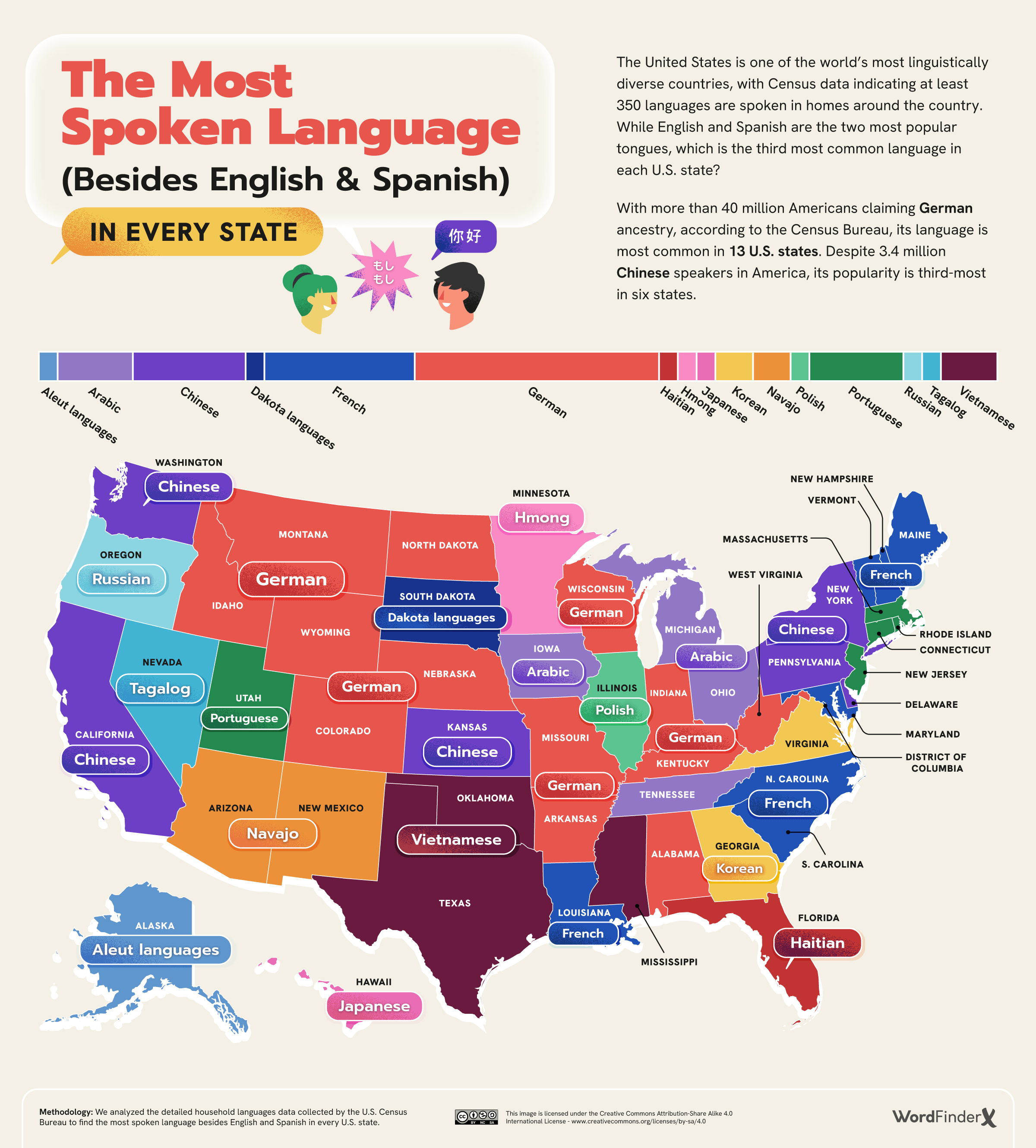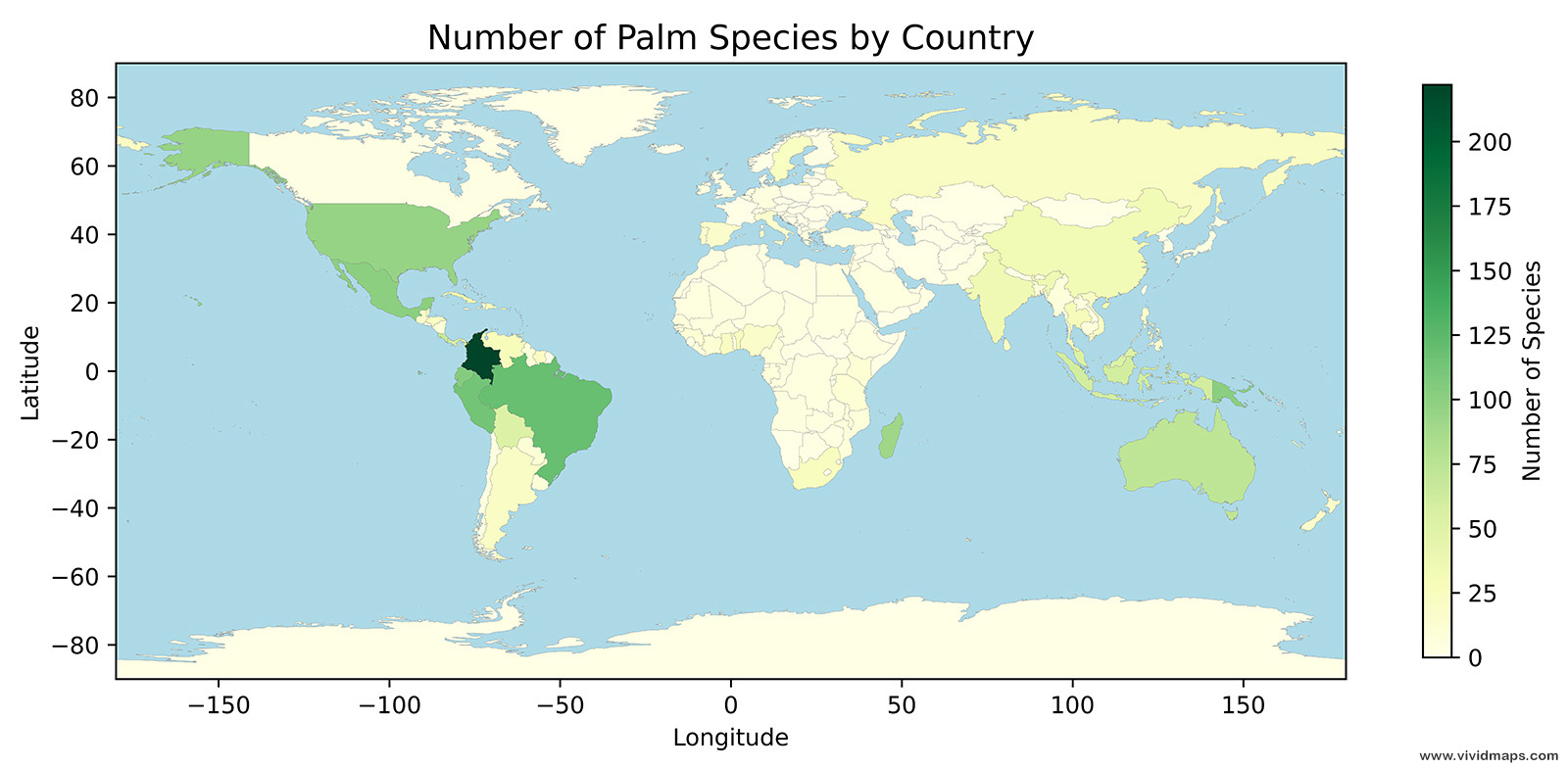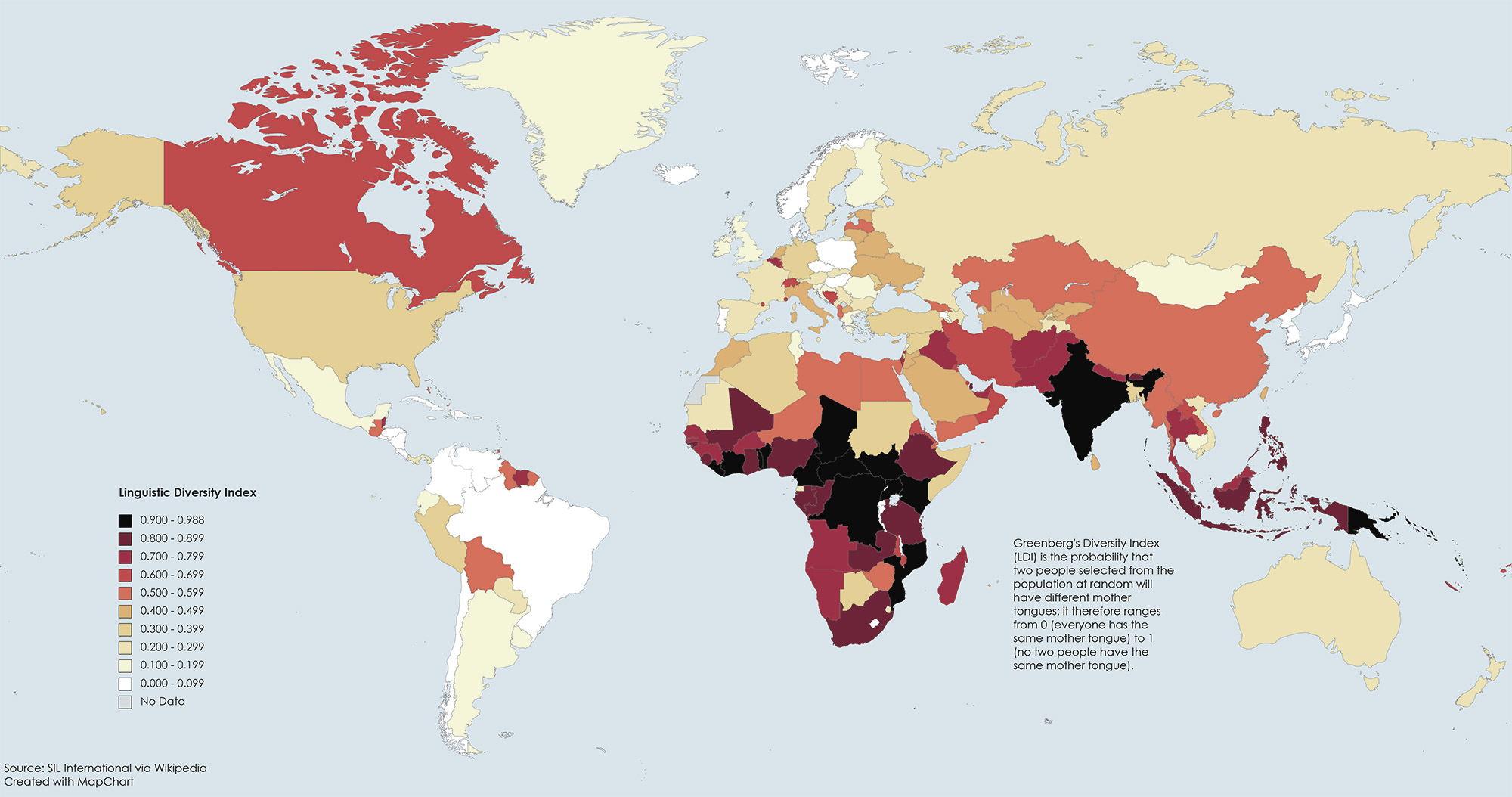Most Spoken Indigenous Languages of the Americas
The Native languages of the Americas with the largest number of speakers encompass a diverse array of linguistic families and cultural backgrounds. Notably, Quechua stands out as one of the most widely spoken indigenous languages in Americas.
The map below created by Reddit user: Aofen shows indigenous languages of the Americas with more than 25,000 speakers.
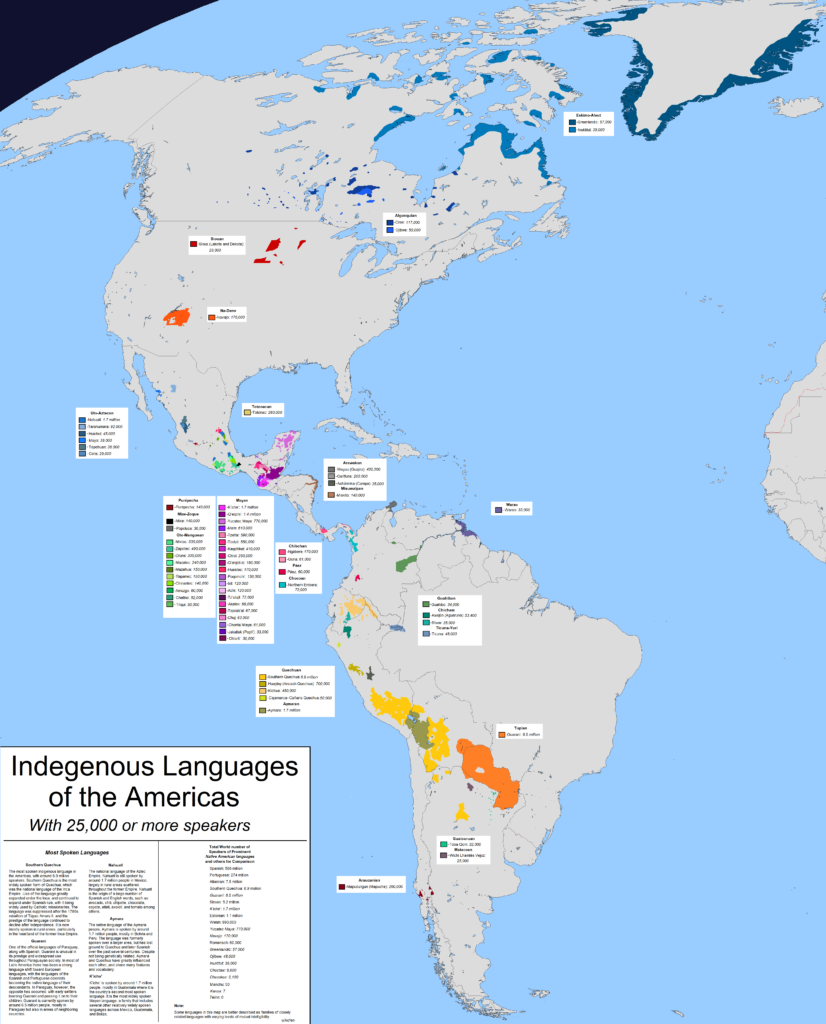
Quechua, spoken across the Andean region, particularly in Peru, Ecuador, and Bolivia, represents another significant indigenous language with a large speaker population (6.9 million speakers). Southern Quechua stands out as the predominant form of Quechua, once the official language of the Inca Empire. Its usage experienced significant growth during the Inca era and persisted under Spanish governance, finding widespread application among Catholic missionaries. However, following the rebellion led by Tupac Amaru II in the 1780s, the language faced suppression, and its prestige gradually diminished in the post-independence period. Presently, Southern Quechua is primarily spoken in rural regions, particularly within the core territories of the former Inca Empire.
Guarani holds the status of one of Paraguay’s official languages, alongside Spanish. It is distinctive in its high regard and extensive usage across Paraguayan society. Unlike the prevailing language shift in many Latin American regions towards European languages, where the descendants of Spanish and Portuguese colonists adopted these languages, Paraguay presents a unique scenario. Here, early settlers acquired and transmitted Guarani to their offspring. Presently, Guarani is spoken by approximately 6.5 million individuals, predominantly in Paraguay, but also in regions of neighboring countries.
Nahuatl served as the national language of the Aztec Empire, and today, it endures as a spoken language for approximately 1.7 million people in Mexico. Its usage is predominantly found in rural areas that are dispersed across the regions that once constituted the Aztec Empire. Nahuatl has contributed significantly to the linguistic landscape, giving rise to numerous words in both Spanish and English, including familiar terms such as avocado, chili, chipotle, chocolate, coyote, atlatl, axolotl, and tomato, among others.
Nahuatl continues to thrive in various forms and dialects, contributing to the linguistic diversity of Mexico and parts of Central America.
The Aymara language, native to the Aymara people, is spoken by approximately 1.7 million individuals, predominantly in Bolivia and Peru. While historically extending across a broader region, Aymara has experienced a decline in usage over the past centuries, yielding territory to Quechua and, subsequently, Spanish. Despite lacking genetic ties, Aymara and Quechua have profoundly influenced one another, resulting in shared linguistic features and vocabulary.
K’iche’ is utilized by approximately 1.7 million speakers, primarily concentrated in Guatemala, where it holds the position as the country’s second most spoken language. As the most prevalent among the Mayan languages, K’iche’ belongs to a linguistic family that encompasses various other widely spoken languages distributed across Mexico, Guatemala, and Belize.
These Native languages, among others, represent not only linguistic diversity but also the cultural richness and resilience of indigenous communities in the Americas. As efforts to preserve and revitalize these languages gain momentum, they play a crucial role in maintaining the cultural heritage and identity of indigenous peoples across the continent.
Want to learn more about the Indigenous people of the Americas and their languages? Check out these books.

